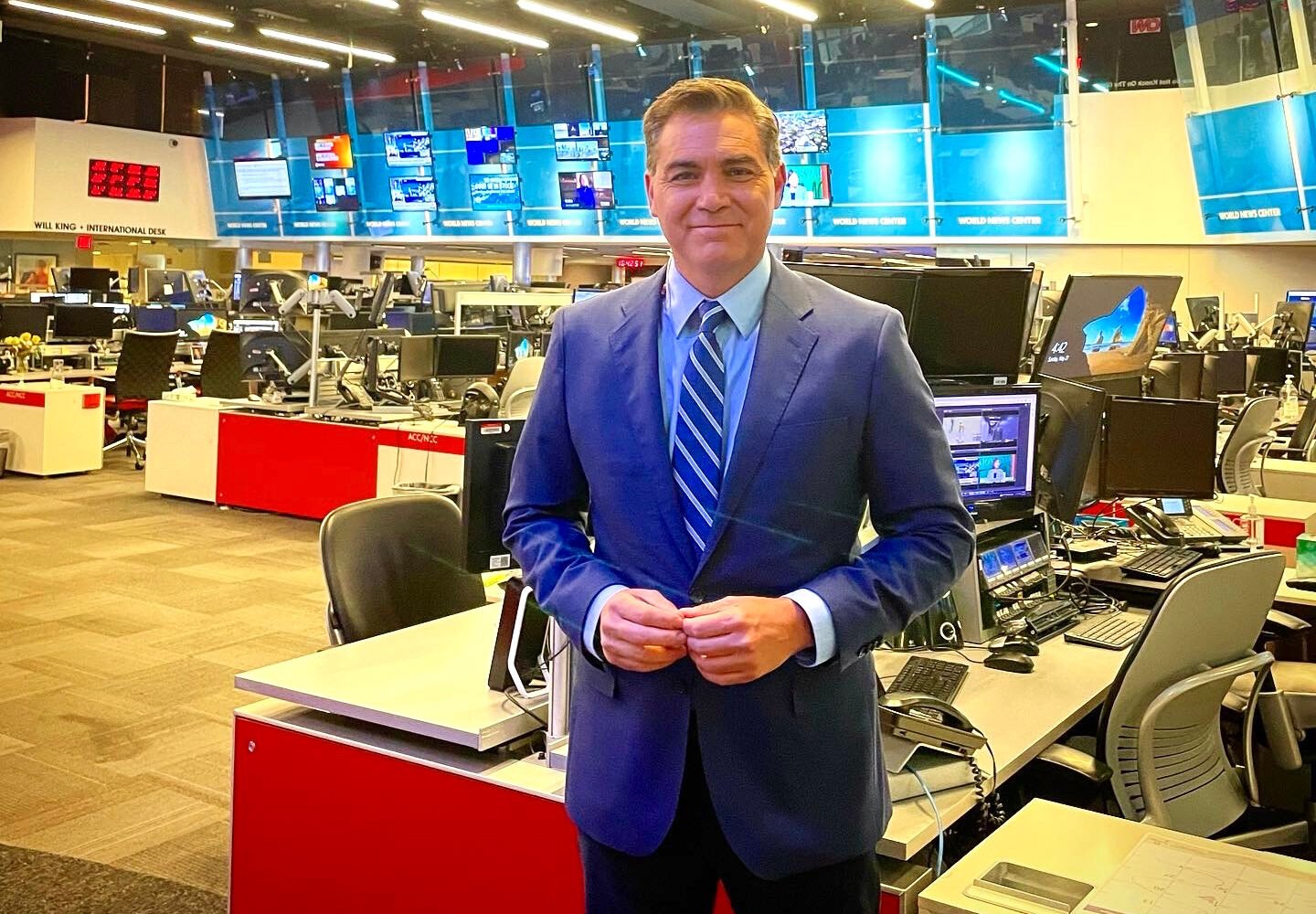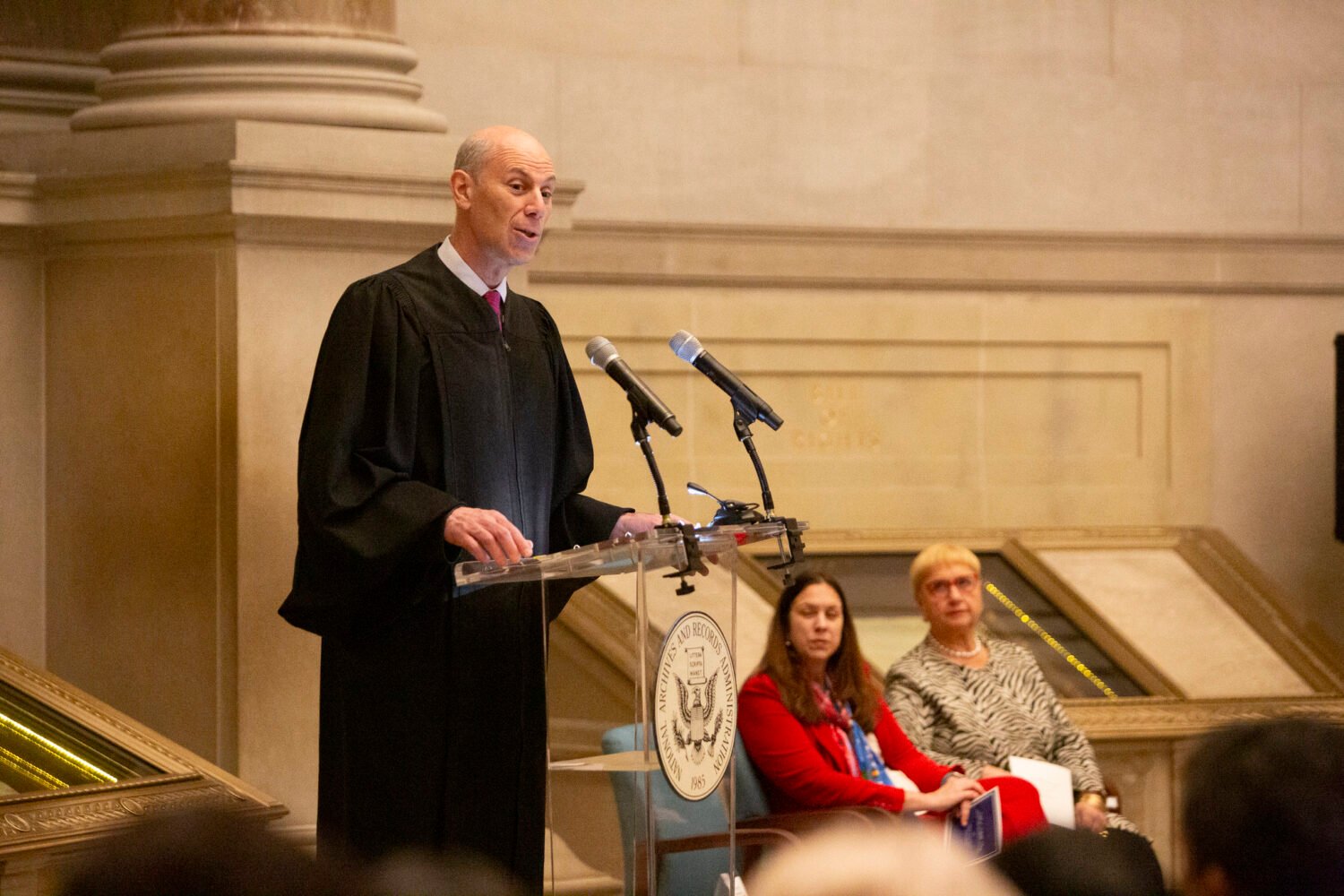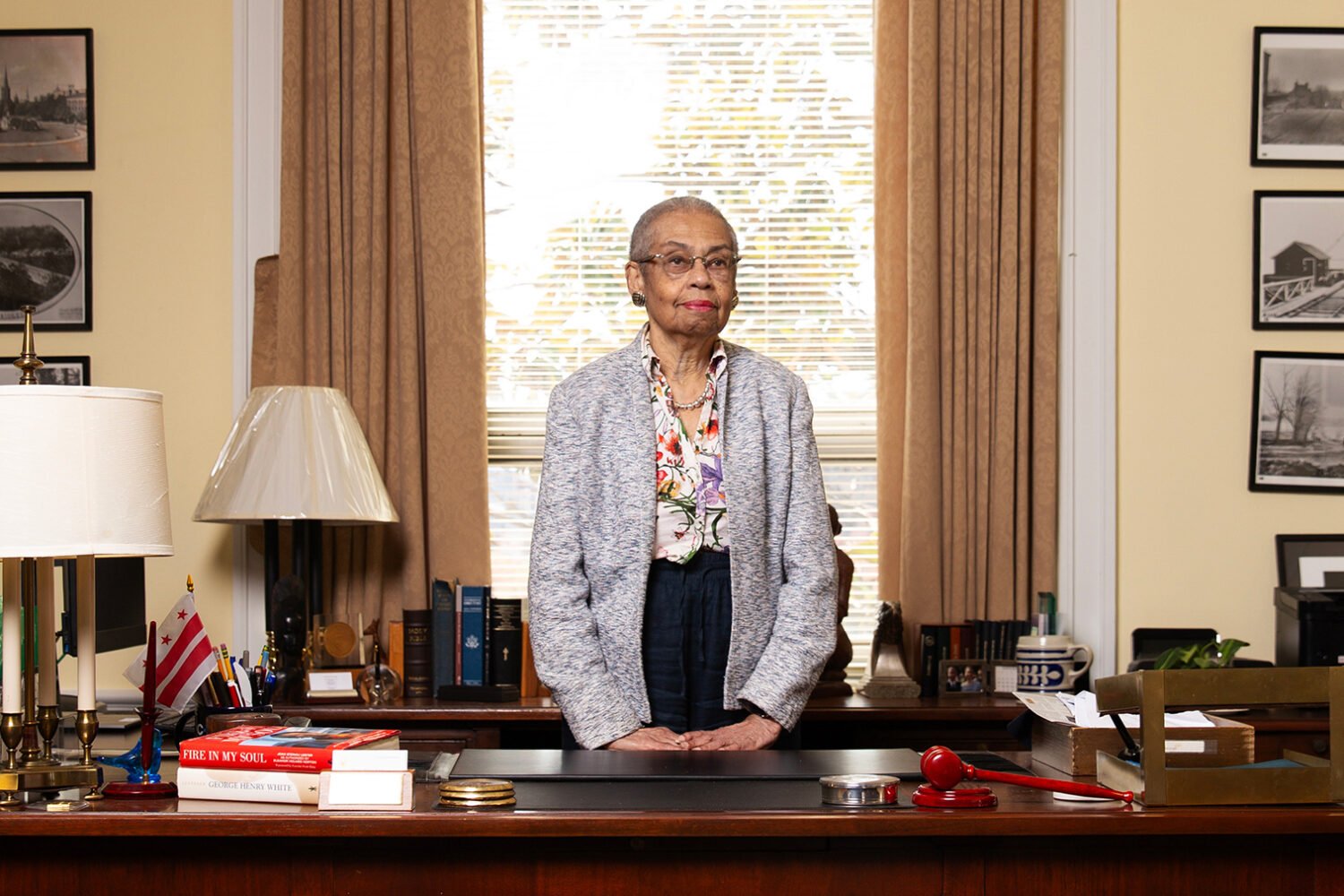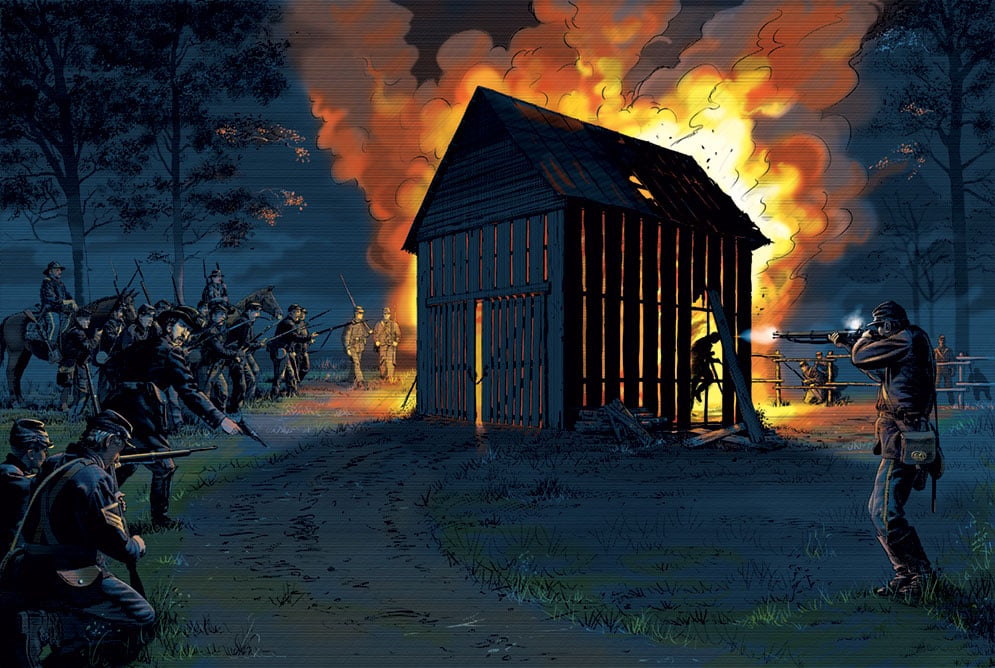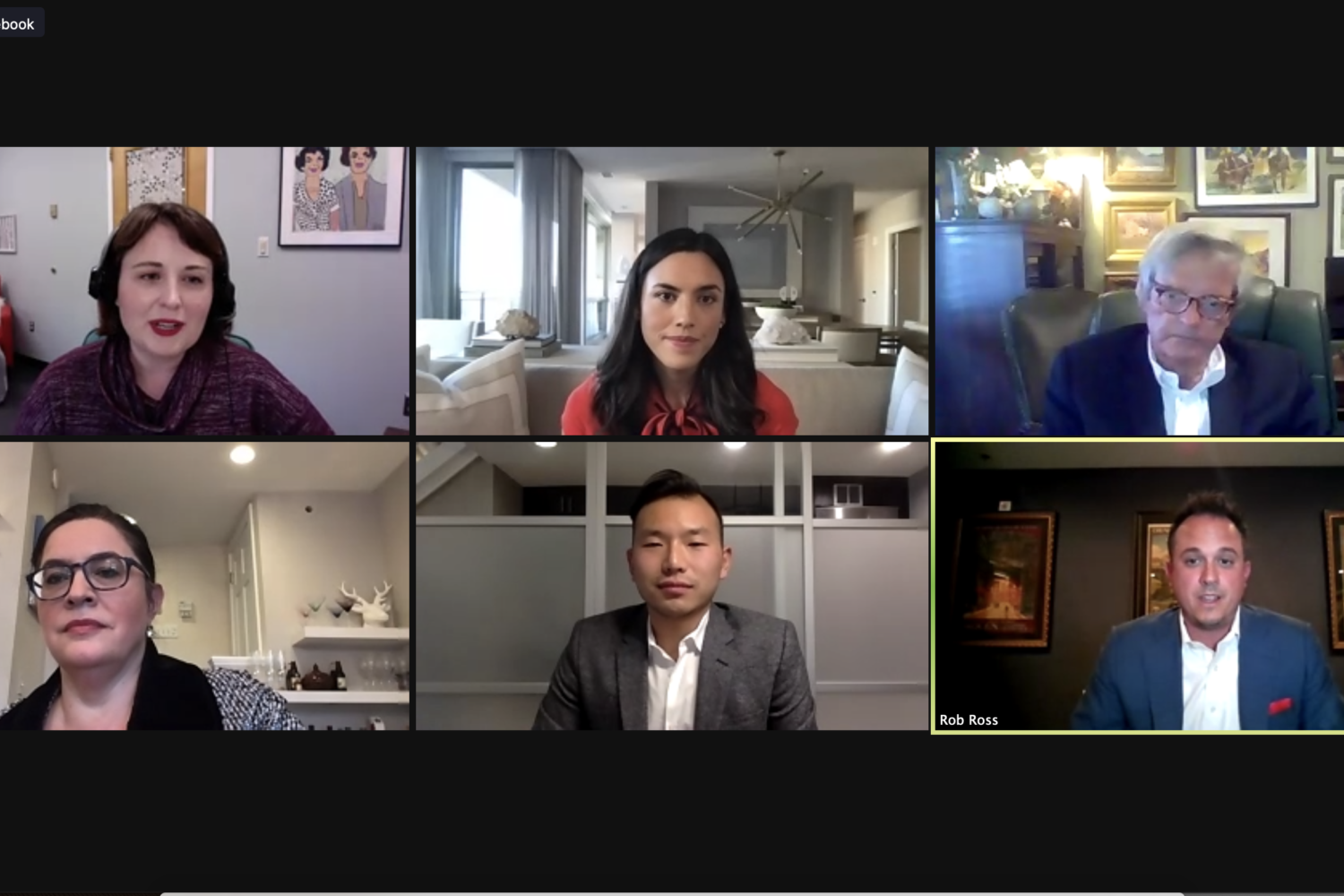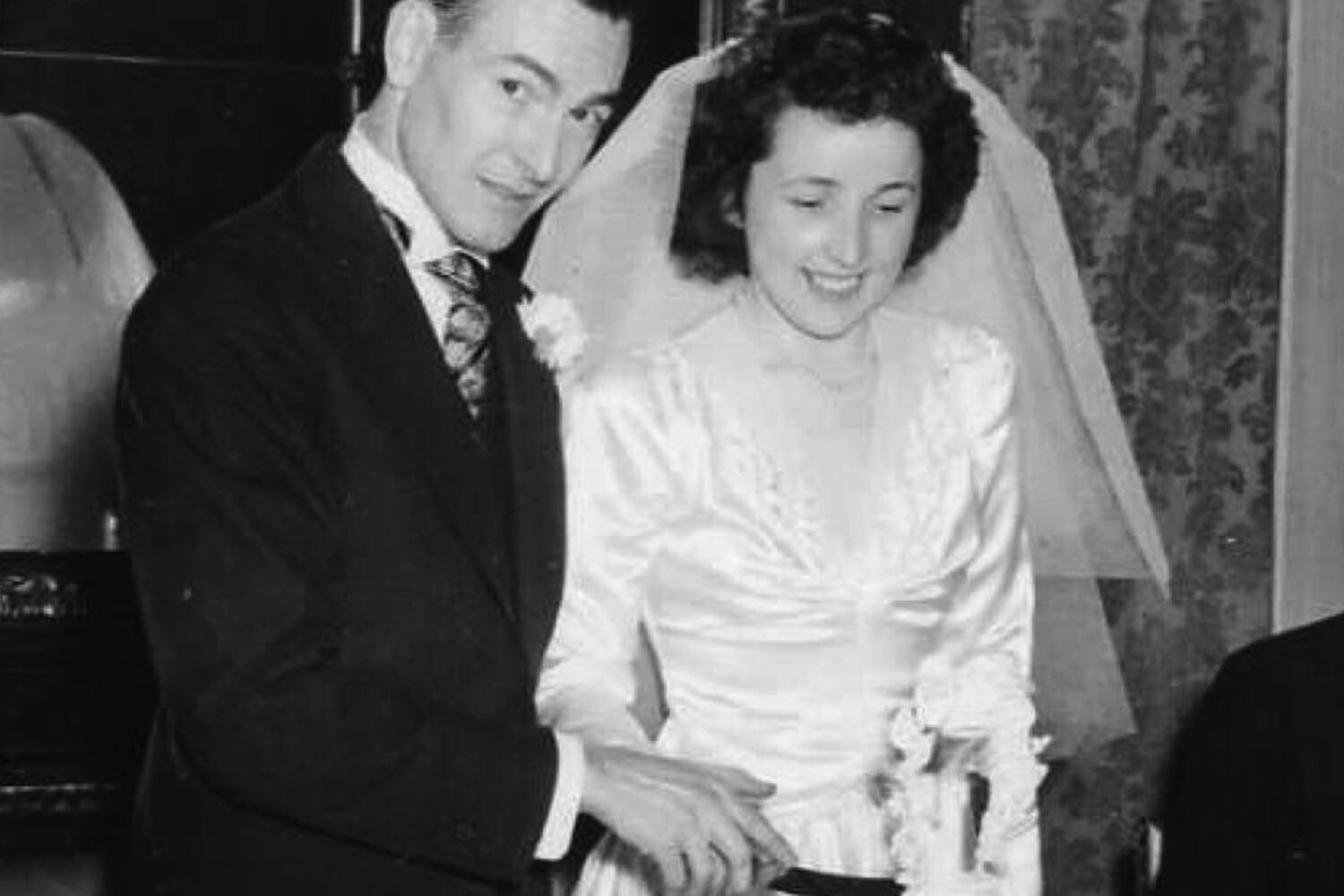Sandy Berger walked down Pennsylvania Avenue toward the National Archives. The public entrance would normally be jammed with tourists on such a bright spring morning. But on the day of Berger’s first visit, the few visitors who didn’t have special permission to enter were turned away. The building had been closed for months, undergoing a $125-million renovation.
It was May 30, 2002, eight months after the terrorist attacks of September 11. Berger walked unnoticed into an entrance used by the archives staff, who had continued to work in the building during the renovation.
He had permission to visit the archives that day, although he was hardly pleased to be there. The employees who encountered Berger that morning would remember that he made little effort to hide his annoyance with the assignment he had been given by his old friend and boss Bill Clinton.
Samuel R. Berger—Sandy to almost everyone—knew this was the first of what might be several days spent poring over banker’s boxes stuffed with thousands of secret documents about the Clinton administration’s struggles against al-Qaeda—specifically about Berger’s performance as Clinton’s national-security adviser.
Berger, an international-trade lawyer before joining the Clinton White House, hadn’t done a document search like this in 30 years; it was the sort of laborious research work he would have left to a paralegal at his old law firm or to one of his young assistants at the White House.
But there was no other option for Berger, who had run Clinton’s National Security Council from 1997 to 2001 and was Clinton’s most trusted foreign-policy adviser. He had to do this himself. The documents were so highly classified that he was one of only a handful of people authorized to see them. The classification on many of the files was “SAP”—special access program, higher than top secret.
From his new home in New York, Clinton had named Berger as his representative from the NSC in dealing with the special congressional committee set up in early 2002 to investigate intelligence failures before September 11. Before Berger talked with any outside investigators, he needed to remind himself what was in his files and in the files of his NSC staff.
Berger had brought it on himself, he knew. “Just leave it to Sandy” had been a mantra in the Clinton White House.
Since 9/11, he had been forced to become the Clinton administration’s de facto spokesman again, responding to all of the reporters who wanted to know whether Clinton and his team felt they bore any responsibility for the attacks, whether Clinton had done everything he could during his eight years in office to kill bin Laden.
Many of Berger’s former administration colleagues had ducked the reporters’ calls, but not Berger. He guessed he had spent hundreds of hours answering these calls since 9/11; that work was all unpaid.
But if annoyance was his first reaction to the archives assignment, his second was fear. And that, too, was typical of Sandy Berger. Beneath his gruff amiability was a deep insecurity that even he admitted bordered on paranoia.
Was there something in the White House documents that might embarrass Berger? Was there some e-mail that would give his enemies a chance to argue that he and his NSC staff had left the nation vulnerable to attack by al-Qaeda?
Berger entered the archives, passed through the magnetometer, and was ushered into the office of Nancy Kegan Smith, a senior archivist responsible for White House documents. Berger carried his cell phone and a leather portfolio that had a notepad inside.
His use of Smith’s office to review documents was a violation of government rules on handling classified documents. He should have been placed in a secure reading room, where he might have been monitored by a guard or surveillance camera. He should have been forced to leave his cell phone behind. But the National Archives had long made exceptions for former senior officials like Berger. He might be out of government now, but the archives staff knew that with Washington’s revolving doors, Berger was likely to be back in power in a future administration—as Hillary Clinton’s secretary of State, some thought—and able to make trouble for the archives and its budget requests.
Berger took a seat next to a coffee table in Smith’s office. Five boxes had been placed on a metal cart wheeled up next to him. They contained documents taken from the “W” library; the 153 boxes that made up the W library held some of Clinton’s most secret White House intelligence files.
The archives staff said Berger made a special request to see one of the boxes, W-049, which contained Richard A. Clarke’s personal office files. Clarke had been the NSC’s counterterrorism director since early in the Clinton presidency—a job he continued to hold in the Bush administration. Berger knew Clarke’s files would be the definitive record of how the Clinton White House had dealt with al-Qaeda.
Friends thought Berger should have taken comfort from the assignment. He was being reunited with paperwork that, they believed, showed he had mostly done his job at the White House when it came to al-Qaeda. Certainly he had a lot less explaining to do than others. During the Clinton presidency, Berger had been as obsessed with bin Laden and the terrorist network as anyone else in the administration. As obsessed as Clarke, the White House’s Chicken Little on al-Qaeda. As obsessed as George Tenet, director of central intelligence, who liked to say that his “hair was on fire” when it came to bin Laden.
It was Berger who had helped persuade Clinton in the mid-1990s—when bin Laden and his terrorist training camps barely registered with the Washington press corps and not at all with the public—of the danger posed by al-Qaeda. It was Berger who had requested that the CIA prepare a daily report for the White House with all of the agency’s overnight intelligence on bin Laden. It was Berger who had made Clarke a member of the White House Principals Committee when it met to discuss terrorist threats.
“Sandy got it,” Tenet would say of Berger, his sometime friend, sometime adversary, on the question of al-Qaeda. It occurred to more than a few people at Tenet’s CIA that the world would be different if Berger had still been national-security adviser in the spring and summer of 2001—and not Condoleezza Rice, Berger’s successor, who had seemed astonishingly incurious about the agency’s drumbeat of warnings in the months before 9/11.
But Berger wasn’t a man to take comfort from the facts. Facts could be spun; they always were. He was a worrier. Friends said it was a trait dating from childhood; his father died suddenly when Berger was only eight, leaving his widowed mother to run the family’s small department store in upstate New York. In Bill Clinton’s frenetic White House, Berger’s worrying became obsessive; he became a catastrophizer.
Even by the standards of Washington workaholics, Berger was exceptional. His 15-hour days at the NSC alarmed his staff, who worried that his weight problems mixed with exhaustion would one day result in a heart attack; Berger hid his paunch beneath well-tailored, dark business suits. He seemed to think that if he were away from the White House even a few hours, something would go wrong and he would be left to take the blame. Reputations could be destroyed in a single news cycle.
Berger wanted to find a copy of a highly classified 15-page report he had asked Clarke to prepare in early 2000; it reviewed what had gone right and wrong in the government’s efforts to respond to millennium threats.
Berger’s assignment to Clarke to write the “after-action report,” which included a list of 29 recommendations for overhauling government antiterrorism programs, might have been seen as more evidence of Berger’s focus on the threat.
But in his paranoia, Berger could see that the report might be read differently—would be read differently—if it became public. Certainly it would be read differently at the Bush White House and among congressional Republicans eager to find a Democratic scapegoat for 9/11. Because several of Clarke’s recommendations hadn’t been acted on before Clinton left office, Berger had reason to fear it would be seized on as proof he hadn’t done all he could to prevent a terrorist attack.
Berger’s first day at the archives ended in frustration. He had seen only a small fraction of the documents in the files. He hadn’t found a copy of Clarke’s 2000 after-action report. Eight years of e-mails and paperwork! It was doubly frustrating because archives rules required Berger to leave behind the pages of handwritten notes he had taken that day. Because the notes were based on classified documents, they, too, were classified.
His second visit, on July 18, 2003, came more than a year after his first. He had returned to the archives to prepare himself to answer questions from the newly created independent commission—the 9/11 commission—and to review the NSC files before they were turned over to the commission’s staff. The special congressional 9/11 committee had been blocked from seeing NSC files on separation-of-powers grounds. But the White House had reluctantly agreed to make them available to the 9/11 commission.
During this visit, Berger decided that whatever the National Archives rules, he would take his notes with him. It seemed crazy to return to his office empty-handed, as if he could have otherwise remembered what was in the thousands of pages he had reviewed. Removing the notes seemed innocent enough. It wasn’t as if he were stealing the documents themselves.
He needed to create a distraction, so he asked Smith, who sat working on her computer, if he could have a few minutes of privacy to make a phone call. His secretary at his new consulting firm had called him with messages from clients; he needed to call them back. Smith agreed, leaving Berger alone in her office.
He moved quickly, ripping off the top 15 pages of his notes from the pad, folding them into thirds, and placing them in one of the inner pockets of his jacket. He left two other pages behind in hopes they would throw the archivist off the trail. He hated to leave notes behind, but he was pleased to have something he could review in his office. Some notes were better than none.
On his third visit, on September 2, 2003, Berger began to steal the documents themselves. He had finally found a copy of Clarke’s 2000 after-action report; it had been faxed to the archives a few weeks earlier from Clinton’s presidential library in Little Rock.
Berger created the same distraction with Smith, claiming he needed to make a business phone call. She obliged. But Berger turned out to be a lousy thief and was detected almost immediately. Another archivist, John Laster, bumped into him on his way to the men’s room.
“Okay, I know this is odd,” Laster wrote to Smith in an e-mail later that day. He explained that when he passed Berger in the hallway, he saw him “fiddling with something white, which appeared to be a piece of paper or multiple pieces of paper” that had been “rolled around his ankle and underneath his pant leg, with a portion of the paper sticking out underneath.’’
Smith tried to convince herself there was an innocent explanation. In a return e-mail, she speculated that Laster had seen something else—maybe a white compression sock, the sort used for circulatory problems. Berger was overweight. He had seemed agitated. Maybe there was some health problem.
Surely Berger wasn’t stealing classified documents. For Smith, an archivist responsible for classified documents—and few documents were as highly classified as the ones Berger was reviewing—the idea was almost too much to bear.
Taking secret documents was a crime. It would ruin Berger. And there was every reason to think that archives staff members would be punished—fired?—for allowing it to happen.
It was too late to try to reconstruct the files Berger had gone through; they had never been fully catalogued, so it was impossible to know exactly what he might have stolen.
Much as she dreaded the idea, Smith decided she would have to test Berger on his next visit to the archives. He was due to return October 2.
Before Berger’s fourth and final trip to the archives on October 2, 2003, Smith gathered the classified files that were to be presented to him and numbered the back of each document in a light pencil.
Berger took the bait. In his search of the files that day, he found two more copies of Clarke’s 2000 report and set them aside to be stolen. The staff suspected in his earlier visits that he used his trips to the men’s room to hide documents in his clothes. The pattern repeated itself in October.
During one of his bathroom visits, Smith’s colleagues went through a stack of documents Berger had just reviewed, checking to see if anything was missing. They started counting: documents 213, 214, 215, 216 . . . .
Document 217 was missing—yet another copy of Clarke’s 2000 report. Smith and her colleagues printed another copy of it. When Berger returned from the bathroom, she presented him with the new copy.
“We apparently forgot to give you this document,” she told Berger, trying to hand him another copy of document 217.
He looked at it. “No, I think I’ve already seen it,” he replied.
Smith insisted he take another look at it; she told him the archives had a method of tracking the documents Berger had been given during his visits. She said she needed to feel confident that Berger, as President Clinton’s liaison to the 9/11 commission, had seen all of the documents in the archives.
Berger said later he should have realized at that moment that the archives staff was on to him. “The bomb should have burst in the air,” he said later. “But obviously it did not.”
Berger stole that copy, too. He asked Smith for a few minutes of privacy, claiming he needed to make a phone call. She left the room and went to a nearby desk that shared the same telephone lines. She could see Berger wasn’t using the phone in her office—the line on the phone didn’t light up. She rushed back to her office to try to catch him in the act but was nearly run over as he charged out the door for the bathroom again.
The archives staff did a final tally and determined that all three copies of Clarke’s report plus the extra copy Smith had presented to him were gone. “The staff and I were almost physically ill,” Smith said.
At about 6 o’clock that night, Berger told Smith he wanted to leave for the day. “I just can’t do this anymore, Nancy,” he told Smith. “My mind is a dishrag.”
She didn’t feel she had the authority to confront Berger and accuse him of stealing classified documents. But she apparently didn’t want to contemplate the idea that Berger would return and steal more from the White House files. She suggested he take a walk and try to finish up the rest of the documents.
He agreed reluctantly. But rather than walk the hallways of the archives, he left the building and went out onto Pennsylvania Avenue. He had the four copies of Clarke’s report and about 15 pages of his notes from the visit stuffed in his pockets. He crossed Pennsylvania Avenue to a construction site on Ninth Street.
He pondered his options. Did he really want to walk back into the National Archives with the stolen documents? Did he want to risk two more opportunities for detection as he walked back in and back out?
Why don’t I put these documents in a place where no one can see them? he thought.
The construction site was ringed by a wire fence. It was twilight. He emptied his pockets and folded the papers into a V shape, then placed them beneath a trailer on the site.
He now had five copies of Clarke’s 2000 report—four he had stolen that day and one taken during an earlier visit. After he returned to the construction site later that night to gather the documents, Berger drove back to his downtown office and used scissors to cut up three of the copies of Clarke’s report into small pieces, which he placed in his office trash can. He still had two copies; he figured he did not need all five.
That weekend, on Saturday, October 4, 2003, Berger got a call at home from Smith. The archives staff had spent most of Friday and Saturday morning trying to figure out what to do, and the decision was made to have Smith phone him and question him directly. She told him that at least three of the documents he had reviewed were missing. Did he have them? Could he look for them?
Berger initially tried to pretend he was indignant with Smith and her staff, accusing the archives of losing the documents and trying to blame him for the loss. She urged him to keep looking.
“I hope you can find them because if not, we have to refer this to the NSC,” she said. The NSC had formal control over the archives, and national-security adviser Condoleezza Rice’s staff would have to be notified about what had happened. Smith urged Berger to go to his office to search.
Berger got into his car and drove to downtown DC, his mind a blur of panic. Should he admit what he had done? Would he be prosecuted? Could he convince the archives not to reveal his actions to the Justice Department? He could only imagine what the Bush White House would do with this.
Berger was going downtown with the intention of rummaging through his trash can. He hoped the trash hadn’t been picked up since Thursday, that the pieces of the documents he had cut up might still be there. If he could present the documents to the archives, even in pieces, perhaps he’d be treated less harshly.
When he entered his office, the trash can was empty. He tried to find a phone number for the waste-disposal company that picked up the trash. No luck.
Later that night, Berger spoke by phone with another senior archives official.
“I think I solved the mystery,” he said, trying to sound unconcerned, as if this were all an innocent mistake. “I found two documents”—the pair of copies of Clarke’s after-action report he hadn’t destroyed. The archives was welcome to come pick them up, he said.
The archives felt it had no choice but to notify the White House about what had happened. On Sunday, the archives called the White House and asked to speak to someone at the NSC. An NSC lawyer provided the archives with the names of Justice Department lawyers who would need to be contacted about a criminal investigation. Berger had already called his own lawyer.
Mike Hurley, leader of the 9/11 commission’s Team 3—which was focused on counterterrorism policy—wondered if Sandy Berger was ill. Berger had arrived at the commission’s K Street offices on January 14, 2004, for an all-day interview, a preview of testimony Berger was scheduled to give at a public hearing that spring. He looked terrible. His hands were shaking, and the tremors grew worse as the interview went on. At one point, he had to hold one hand down with the other.
Every half hour or so, Berger would ask that one of the commission staffers buy him a large cup of coffee from the nearby Starbucks. “It’s like he’s chain-drinking the coffee,” one of the Team 3 investigators said later. Berger ignored the sandwiches brought in; he nibbled on a cookie.
Berger was known in the Clinton White House for his gruff, good-humored cool; he had been a natural on the Sunday talk shows. Now he was nothing but caffeine-jangled nerves.
Berger had reason to be panicked. He had learned weeks earlier that he was under criminal investigation by the Justice Department over theft of classified documents from the National Archives—specifically several copies of Richard Clarke’s secret 2000 after-action report. Berger knew that at Justice, a few prosecutors who ultimately answered to the Bush White House were reviewing evidence that had the potential to end his career—even send him to prison.
Despite the caffeine buzz, Berger was able to answer questions coherently during the interview. He took a little comfort from the fact that the commission’s staff seemed to know nothing about what had happened at the archives.
He had gone into the meeting with several talking points. He wanted to make it clear to the commission and its staff that he believed Bill Clinton had taken al-Qaeda as seriously as it did any other national-security threat and that the Clinton White House had done what it could to kill Osama bin Laden. Not wound or capture him—Clinton had given explicit authority to the CIA to kill bin Laden. Berger said: “He wanted him dead.”
The remark created confusion among some members of Team 3. Was this just bluster on Berger’s part? In interviewing George Tenet’s deputies at the CIA, the commission’s staff had been told again and again that the agency hadn’t been authorized to kill bin Laden—that the CIA had been given a confusing set of presidential orders that allowed for bin Laden’s capture but not his death. Within the CIA, the common wisdom was that overly cautious lawyers at the White House or at Janet Reno’s Justice Department were wary of anything that resembled an assassination order.
Told of the CIA complaints, Berger looked confused. No, he assured the commission’s staff, there was an explicit, if highly secret, order given by Clinton to the CIA in late 1998 to kill bin Laden. It was part of a so-called memorandum of notification, or MON, involving Afghanistan. MONs were top-secret orders prepared by the White House to authorize covert operations abroad by the CIA.
“There is paperwork,” Berger said. “Keep looking for it.”
Berger also wanted to overcome any perception that Clinton had been hindered in dealing with al-Qaeda because of his many personal scandals. Berger said it was remarkable how little Clinton allowed the scandals to affect his performance as president, most impressively in the summer of 1998.
On August 7 of that year, the American embassies in Kenya and Tanzania were blown up by al-Qaeda followers, killing 224 people, including 12 Americans. That month, the Lewinsky scandal was at its height, with Clinton scheduled to testify before a grand jury on August 17 about his relationship with the former intern. A special prosecutor, Kenneth Starr, was only weeks away from presenting a report to Congress that was expected to accuse Clinton of impeachable offenses, including lying about his relationship with Lewinsky.
After the East Africa bombings, Clinton weighed a military response to the attacks targeting al-Qaeda and its sponsors in the African nation of Sudan. Clinton’s political advisers worried that the attacks, especially if they failed to kill bin Laden, would be perceived as an effort by Clinton to divert attention from Lewinsky. But Berger said Clinton refused to allow any political considerations to be factored into the response to the attacks. “We’re going to get crap either way,” Berger recalled Clinton saying. “So you should do the right thing.”
Berger said there was another important way of measuring the Clinton White House’s commitment to dealing with terrorism. “Look what we did with Dick Clarke,” he reminded the commission’s staff.
An otherwise midlevel career bureaucrat in the NSC, Clarke had become a formidable power during the Clinton administration, with almost instant access to the Oval Office. The Counterterrorism Security Group, which Clarke led, bypassed the usual reporting lines in the White House. The CSG reported directly to Berger’s so-called Small Group, which was made up of Defense secretary William Cohen, Secretary of State Madeleine Albright, Attorney General Janet Reno, and a tiny number of other senior officials cleared to know the most secret information about the government’s counterterrorism efforts. The decision to grant so much authority to Clarke had come at an institutional cost to Berger, who often had to spend much of his workday in the West Wing trying to soothe egos of others in the government who were offended by the sharp-elbowed Clarke.
Berger explained that during the transition between the Clinton and Bush administrations, he had tried to impress on his successor, Condoleezza Rice, how dangerous bin Laden was. He recalled how he had made a special effort to drop in on the introductory NSC briefing that Clarke gave to Rice about al-Qaeda.
Berger said he wanted to signal, by his presence at the briefing, the severity of the threat. “You know, Condi,” he recalled telling her, “you’ll be spending more time on terrorism in general—and al-Qaeda in particular—than anything else.”
He was never sure he got his message across to Rice or the other members of the transition team, including her counterterrorism adviser, Philip Zelikow.
In July 2004, Tom Kean and Lee Hamilton, the 9/11 commission’s leaders, were about to get another taste of the partisan games they both loathed. They had known for months about the criminal investigation of Sandy Berger and the allegations that he had stolen classified documents from the National Archives that were supposed to be shared with the commission. They had gotten phone calls earlier that year from White House counsel Alberto Gonzales to advise them of the inquiry. He asked them to keep the information secret because the investigation might not be completed for weeks or months. They had done as they were asked.
But on July 19, three days before the commission issued its final report, news of the Berger investigation leaked. The assumption of the commission and its staff was that it was a leak from the White House, eager to suggest that Berger’s acts had deprived the commission of information that might have embarrassed him and the Clinton administration.
Berger announced that he was stepping down as an adviser to John Kerry’s presidential campaign. The following April, he pleaded guilty to a misdemeanor count of “unauthorized removal and retention of classified material” and of mishandling classified documents. Under the plea bargain, the Justice Department asked the court to impose a $10,000 fine; the charges carried up to a year in prison, but prosecutors didn’t request jail time. The judge in the case, Deborah A. Robinson, rejected the Justice Department’s proposal as too lenient. She fined Berger $50,000 and ordered him to give up his security clearance for three years.
“My actions . . . were wrong,” Berger told Robinson. “They were foolish. I deeply regret them, and I have every day since. I let considerations of personal convenience override clear rules of handling classified material.”

